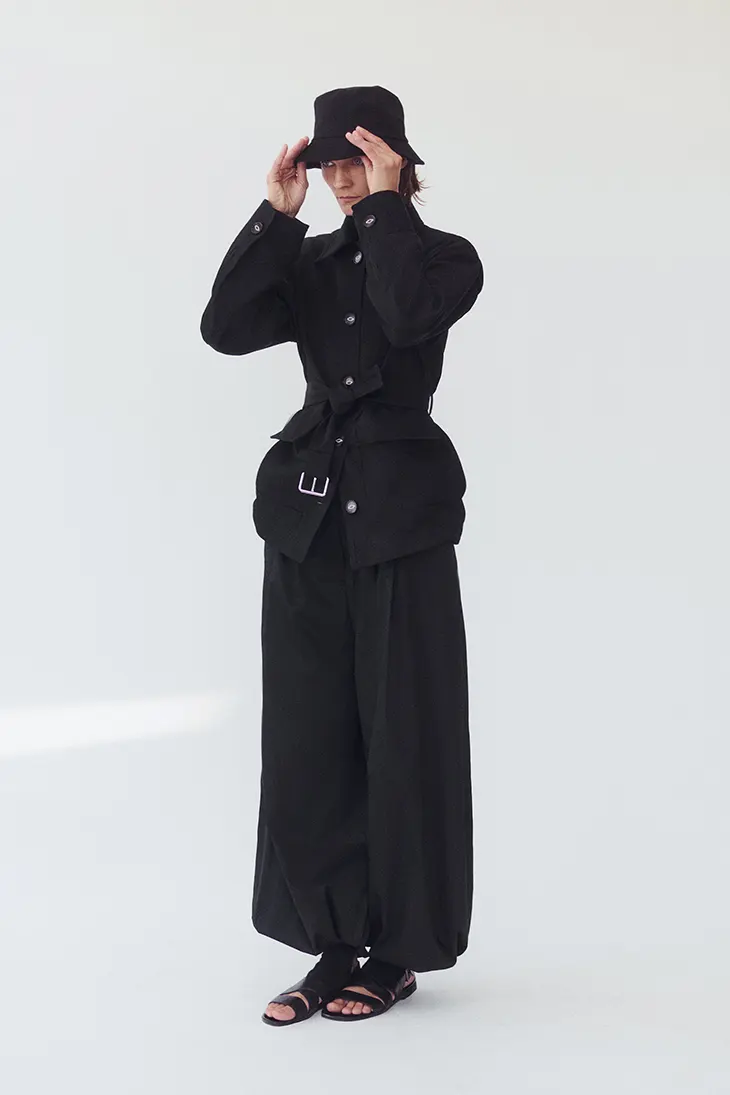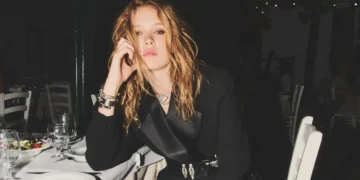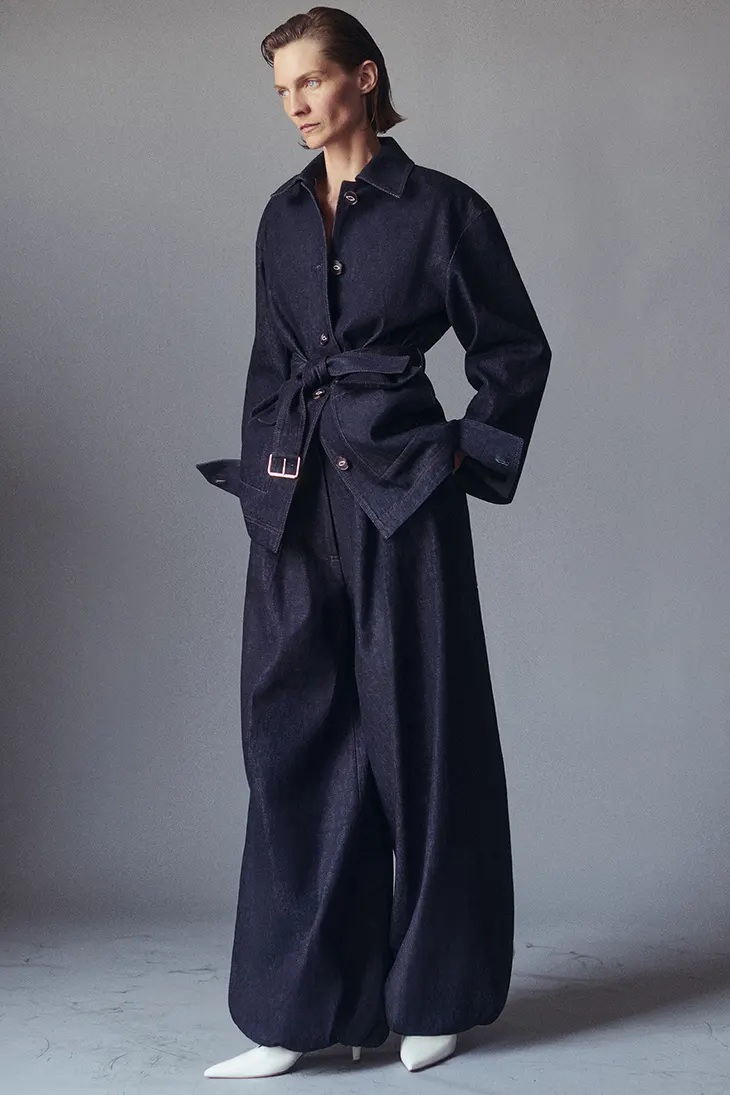
Adam Lippes channels his recent trip through Japan into Resort 2026, shaping the collection with impressions from Tokyo, Kyoto, and Shuzenji. The cities and their contrasts inspired a deep dive into refinement and restraint, while offering visual references that reflect a culture focused on precision and balance. Lippes connects these influences with Amekaji, short for “American Casual,” a Japanese take on classic U.S. workwear. That thread runs through the collection with clarity.
The palette draws directly from Robert Motherwell’s Lyric Suite, where over six hundred ink paintings explore texture and tone through rice paper. Instead of traditional canvas, Motherwell used thin, translucent sheets that absorb and shift pigment. In response to these works, Lippes introduces oatmeal, heathered grey, and bronze as anchors, with bursts of deep navy, chocolate, persimmon, plum, and gold.
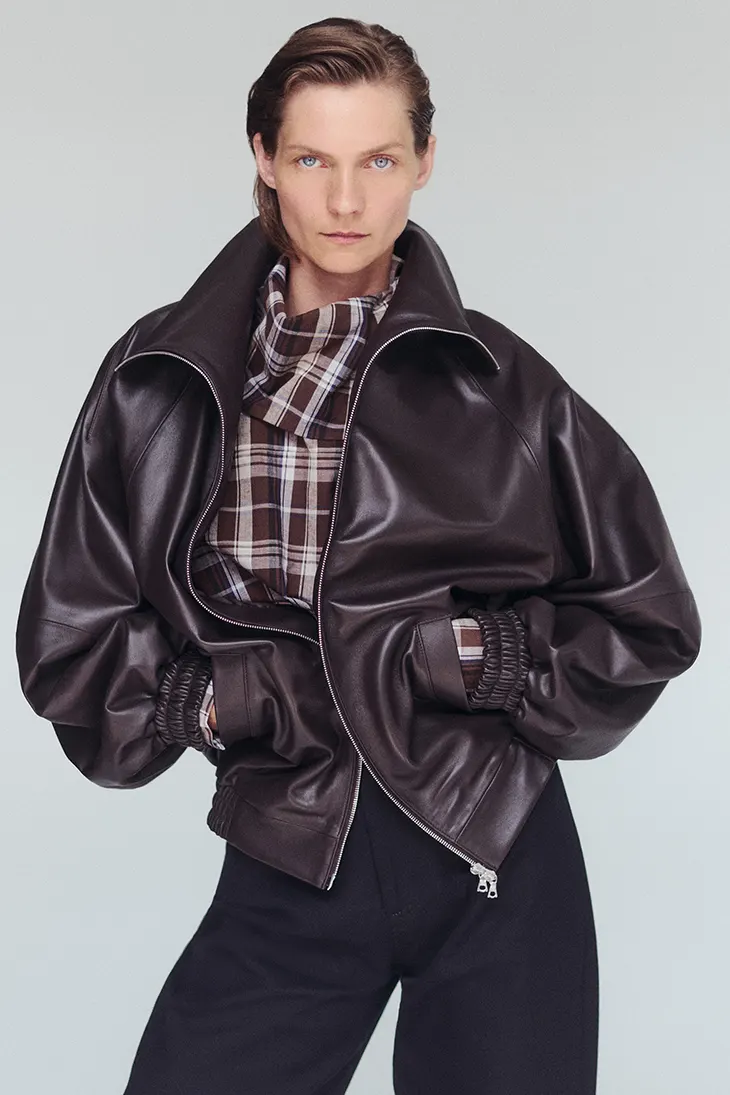
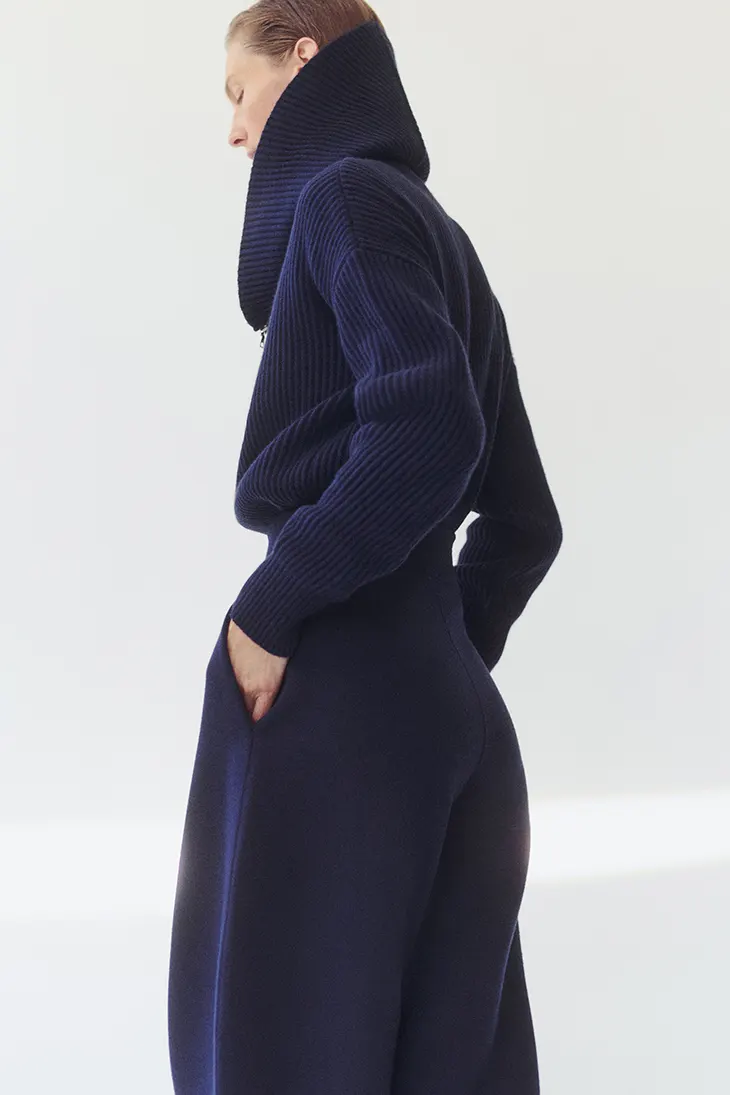
Prints serve as both visual cue and cultural link. A Meiji-era lacquer box informed the floral motifs, which appear in placed prints and a hand-loomed lurex jacquard. The diamond-shaped hishi pattern, rooted in Japanese quilting, surfaces with clarity, while American plaids and stripes recall workwear fabrics from mid-century wardrobes. Lippes draws on both traditions without forcing them into a single category, letting each reference speak with intent.
Fabric choice carries significant weight. More than a third of the materials come from Japan, 16oz indigo denim, cotton poplin, and textured wool suiting stand alongside Italian double-face satin, lacquered wool, and fil-coupé made to look like brushstrokes. Each textile brings a distinct tactile quality. Brushed mohair, crinkled metallic silk, and double-face cashmere add texture without distraction.
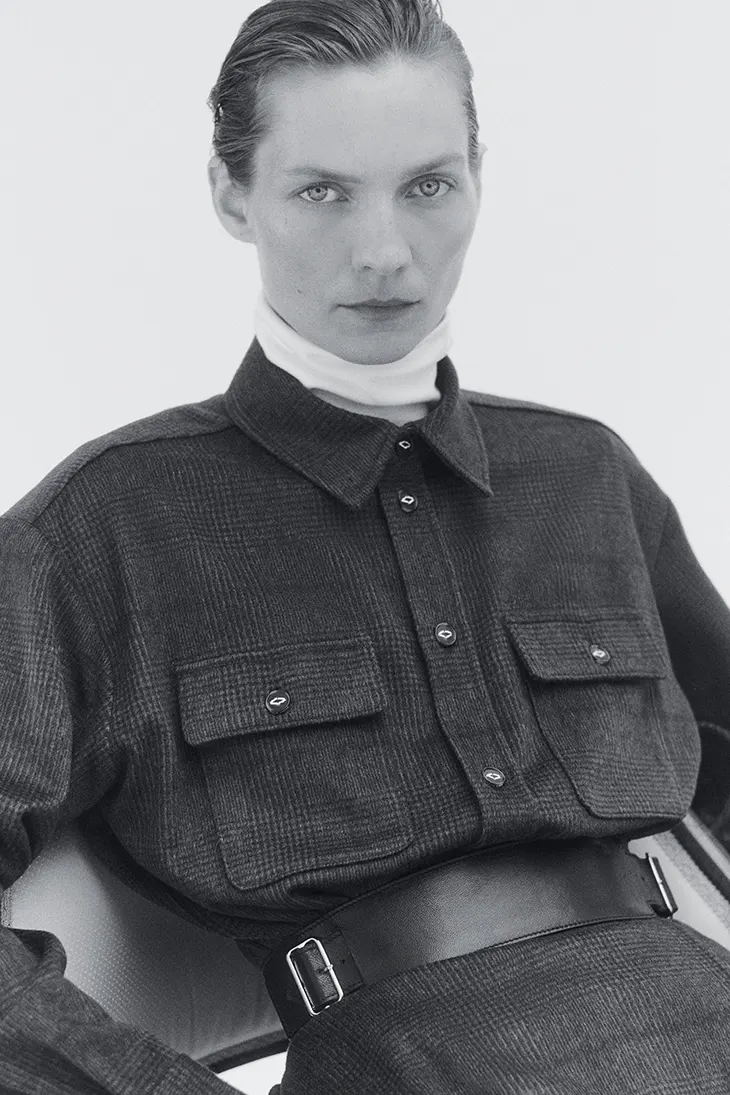
Tailoring shapes the direction of the collection. Lippes grounds his work in form, introducing crisp poplin shirting, draped silks, and ultra-light cashmere pieces that wear close to the body. The silhouettes reference Japan’s visual codes. Balloon pants take cues from Tokyo construction uniforms, while wrap shirts echo the sleeves of a yukata. One gown, built using a traditional Japanese cutting technique, uses a single seam to define the body. Pants with pleated, detachable skirts speak to the formal language of hakama trousers.
References to Japanese school uniforms emerge in sweatpants, sweatshirts, and T-shirts that take on new proportions. The casual elements connect with elevated pieces like leather bombers, Hawaiian shirts, and updated work jackets. Lippes doesn’t create a literal translation of East or West, instead he constructs an exchange, where each garment feels shaped by both.
